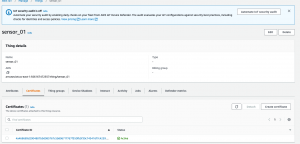I finished up drafting implementation detail slides for the design review presentation and gave the talk. After that, I ended up changing our communication stack when attempting to request cloud resource credits. We ported everything to an AWS solution i.e CloudMQTT -> AWS iOT core, MongoDB -> DynamoDB & Atlas -> EC2. The main reason being that we felt getting credits would be more convenient under the AWS umbrella. The connection process and other components used still remain the same. I calculated our necessary resource usage for these services and our requirements can be satisfied given the free subscription limits so I did not fill out the resource request form. For example, free iOT core allows 2.5 million connection hours https://aws.amazon.com/iot-core/pricing/ (way longer than necessary for our 2 MVP spot modules)Unlikely, but if our testing is run 24/7 for prolonged days, we may later request credits to increase our DynamoDB write/read capacity units. I also walked through some mock tutorials to enable connectivity to our iOT device(See AWS console image below) and read dynamo DB’s boto3 python API to familiarize with making backend queries.

